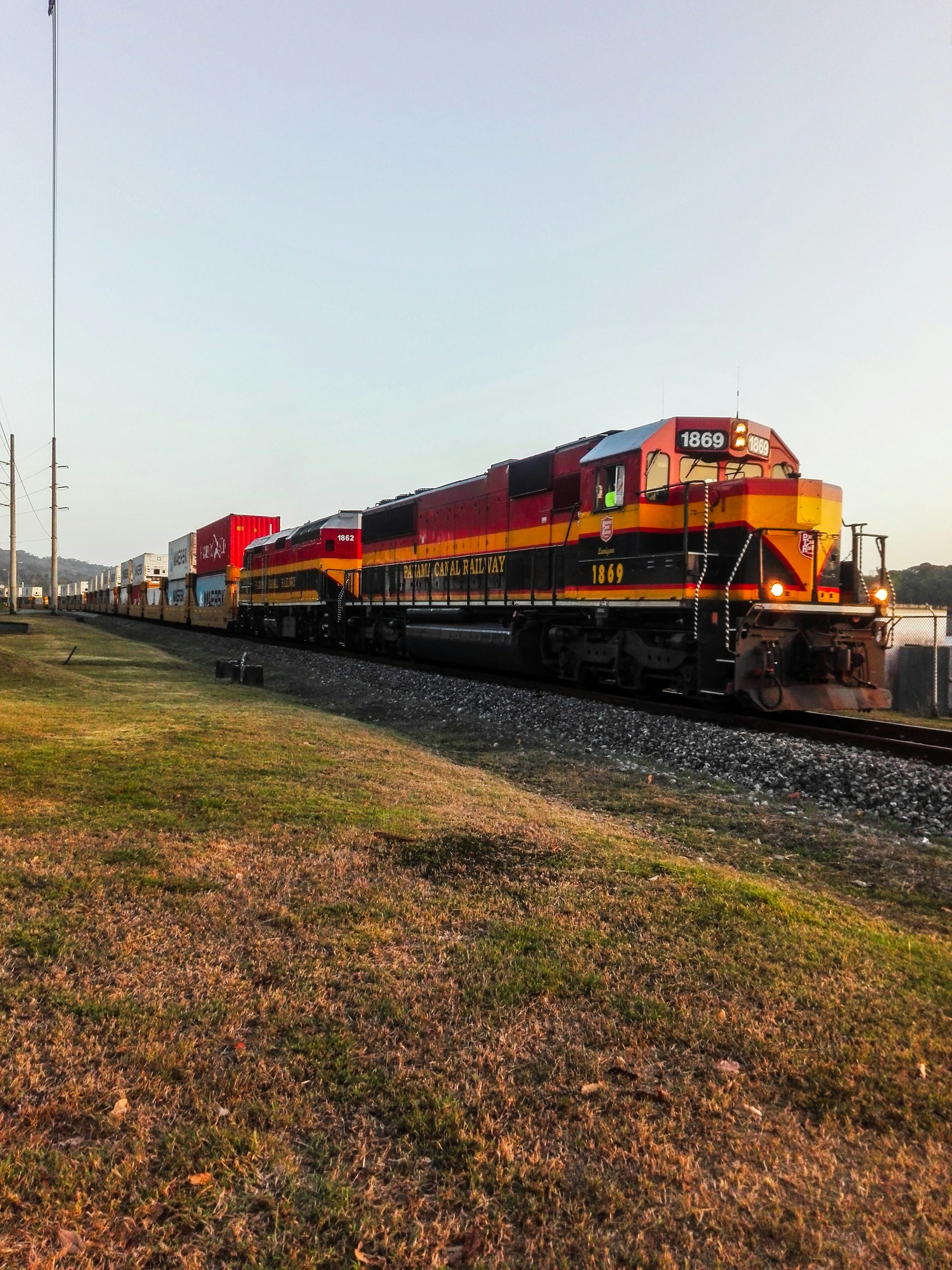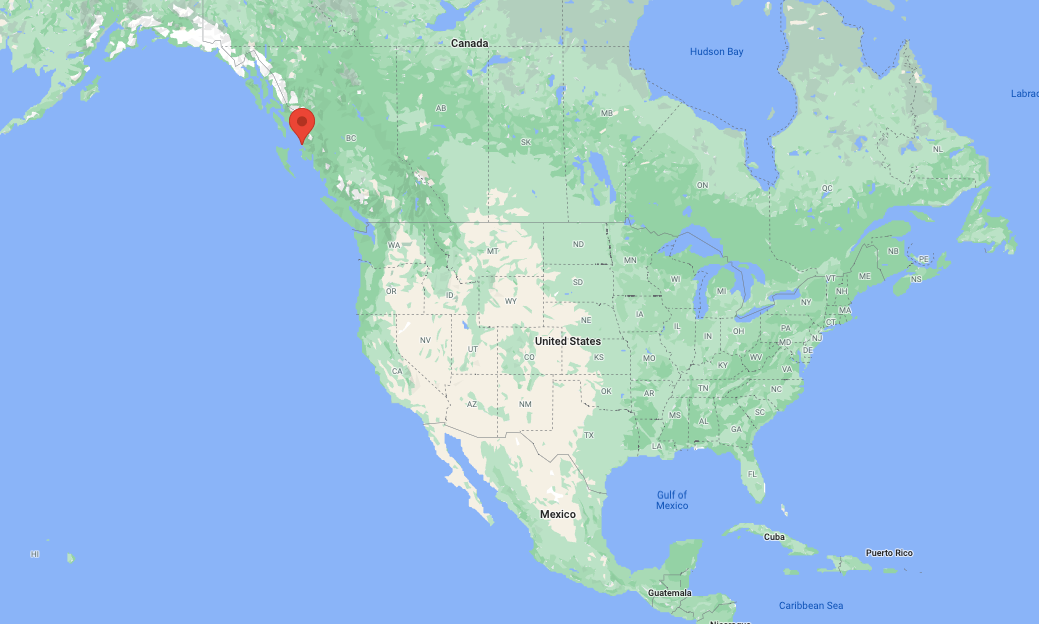It's time for another Prince Rupert

When Prince Rupert surged to the main stage a few years back, I remember everyone on the West Coast was in a panic about the Canadians taking over. Years have passed and cargo hasn't changed paths too much.

Where is this mega terminal?
The first time I heard of the Prince Rupert terminal, I was told it was huge and capable of handling millions of containers per year. I pictured a massive terminal, like the ones you see in Asia. I thought they must have 30 cranes, and a million acres of land, and a billion trucks, and a trillion people there to work. What I pictured in my mind was definitely not the case. The only thing that is true is their volume capability - 1.35 million TEU's in 74 acres. What makes Prince Rupert a dangerous competitor isn't their sheer size, it's their efficiency.
The terminal is located almost in Alaska, along British Columbia's northernmost coast and it's tiny.

To dispel the myth that was circulating about Prince Rupert being massive, here's an aerial shot of it.

What makes Prince Rupert a formidable competitor?
Due to it's location up north, where very few people live (relative to populations down south) there are very few imports that will be traveling to the local communities. Prince Rupert is also on an island (connected by a bridge) too far for trucks to make a drive. PR isa able to get the productivity it does for one reason - on dock rail. The terminal is a gateway for Canadian and US imports via rail. The CN rail runs from Prince Rupert and connects to the rest of the continents rail networks. The best part of running a rail only terminal is the ability to move cargo out. The terminal operator has much better control over moving cargo via on-dock rail they load rather than waiting for trucking companies to come retrieve locally bound cargo. Additionally, a rail only operation has two major advantage - simple sorts & massive piles.
In Seattle, when we work with large distribution centers who move thousands on containers per year alone, we set up quick gate piles or peel piles. These are piles where the trucker and destination are the same and the terminal delivers the first one in the stack to the first driver. It is extremely efficient for both parties but it requires one key thing - cargo must be going to the same place. In a large scale rail operation, trains can be dispatched for a single destination or single line. This means cargo can be stacked similarly in big piles for a single destination and loaded to rail cars quickly.
Is it time for another Prince Rupert on the coast?
With cargo volumes ever increasing, it might be time to look at a new version of Prince Rupert elsewhere on the coast. The Port of Coos Bay is answering that call.
Coos Bay is Oregon's only seaport (if you exclude Astoria which doesn't have much cargo volume anymore) and is situated much like Prince Rupert. The area around Coos Bay is very rural. There isn't a population to support a mega terminal in the vicinity and there are no distribution centers to move cargo to. The Port is ok with that since they upgraded and built a new rail line to connect the port with the rest of the US network.
The addition of a Coos Bay container facility to the coast's port infrastructure means that we could see another highly efficient terminal come online in the next decade.
Courtesy of the Port of Coos Bay:
For Immediate Release: September 1, 2021
Coos Bay, OR – The Oregon International Port of Coos Bay announced Wednesday that it has partnered with NorthPoint Development, a development firm based in Riverside, MO, to construct a multimodal container facility on the North Spit. The Port and NorthPoint have entered into a Memorandum of Understanding (MOU) for the project, with the intention of finalizing negotiations and signing a contract by the end of the calendar year.
NorthPoint and the Port estimate that the facility, once fully constructed, will move over one million forty-foot containers annually in and outbound through the Port of Coos Bay via the Coos Bay Rail Line. The rail spur on the North Spit will be extended to the project site and infrastructure improvements throughout the line will be completed to accommodate double stack container movements.
It is anticipated that construction of this facility will support approximately 500 short-term construction jobs and up to 250 permanent, full-time family wage jobs. “I applaud the Port of Coos Bay and NorthPoint for partnering on the North Spit project,” said Representative Peter DeFazio. “This project will create hundreds of good-paying jobs on Oregon’s coast, which will boost Coos Bay’s local economy and provide needed support to rebuild the economic base for the region. I recently secured $32 million in the 2022 funding bill to support maintenance and improvements of the Coos Bay North Jetty. The more than $50 million I worked to obtain for the purchase and rehabilitation of the Coos Bay rail line also helped to make this possible. As Chair of the Transportation and Infrastructure Committee, I will continue to do everything within my power to support Oregon’s ports so that they remain competitive and continue to support our coastal economy.”
Construction of the facility and railroad improvements will result in a significant investment in the community and are currently an estimated $1 Billion. “With the recent closure of the Georgia Pacific Mill and other recent job loss in southwestern Oregon, the Port sees this as an opportunity to rebuild the economic base for the region,” said John Burns, Port CEO. “This is a project that has the potential to diversify the region’s economy and create employment opportunities both for the existing workforce and for future generations.” According to the Oregon Employment Department, Coos County has lost approximately 1,160 payroll jobs from the first quarter of 2020 to the first quarter of 2021.
Congestion at major west coast ports has continued to worsen for decades, creating bottlenecks that slow the movement of goods and increase greenhouse gas emissions. NorthPoint views the Coos Bay harbor as an opportunity to create an environmentally conscious, state of the art gateway which will alleviate congestion throughout the west coast and improve the movement of goods in and out of the United States and international markets. “The Coos Bay Harbor offers an innovative solution to an ever-growing global challenge,” said Chad Meyer, President and Founding Partner of NorthPoint. “We have an opportunity to enhance the economy of the region while improving the logistics system as a whole.” The new terminal will promote expedited turn time and eliminate anchoring for maritime vessels, a shipping option greatly needed in the marketplace. As of Sunday August 29th, the ports of L.A. and Long Beach had 47 vessels anchored offshore waiting to berth. Anchored vessels add significant costs in shipping, delays in product delivery and increased greenhouse gas emissions.
Currently, the majority of imports and exports moving in and out of Oregon travel by truck via the ports of Seattle/Tacoma and Oakland. This adds to the total delivered cost of products and commodities, roadway congestion, and increased greenhouse gas emissions. Utilizing the Coos Bay Rail Line to transport containers instead of trucks will reduce overall emissions up to seventy-five percent.
The Port also continues work with the U.S. Army Corps of Engineers and other regulatory agencies on the Channel Modification Project. This project will deepen and widen the federally authorized channel from -37’ to -45’ Mean Lowest Low Water (MLLW) and 300’ to 450’ nominal width. Deepening and widening the channel is necessary for the Port to remain competitive in the global marketplace as ocean carriers continue to utilize larger ships, a trend that has continued for well over a half century.


